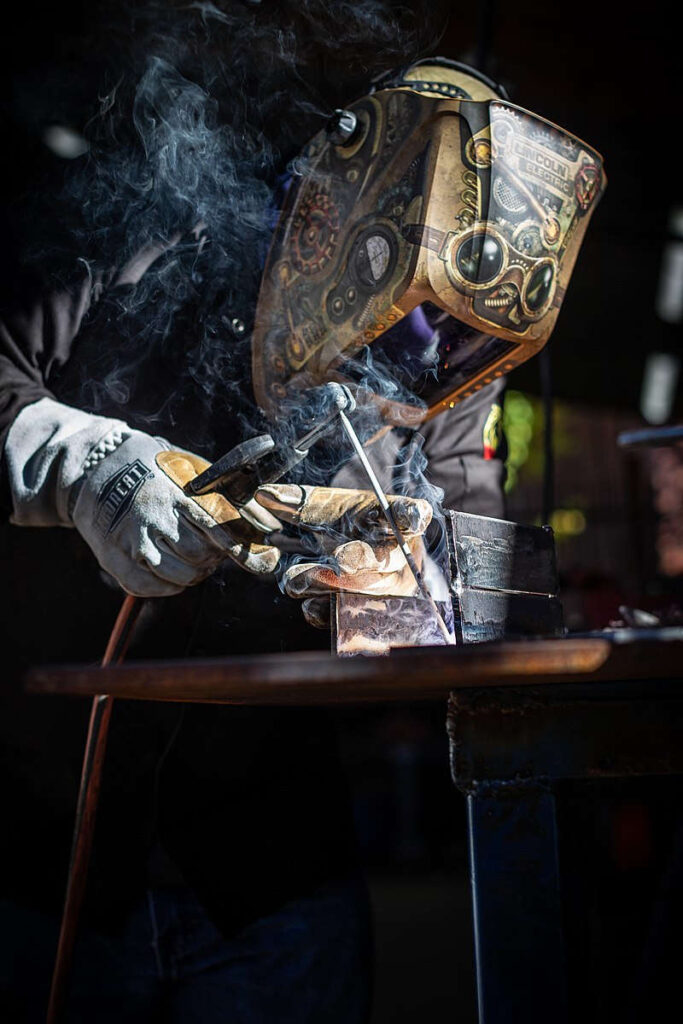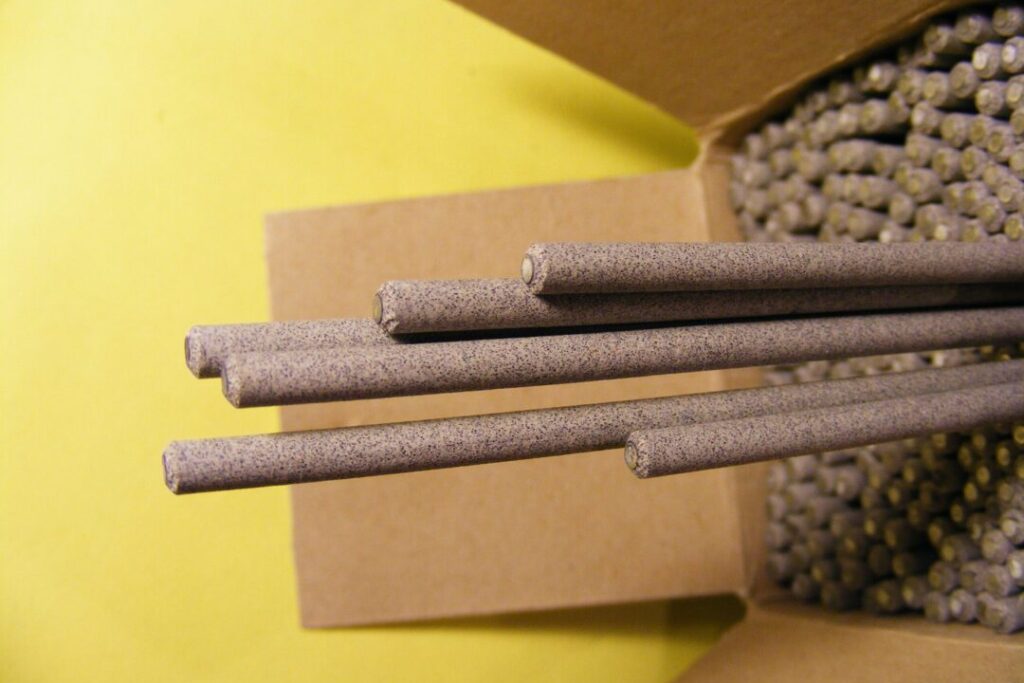Can You Stick Weld Aluminum
americanindustrialsupl and its partners may earn a commission if you purchase a product through one of our links.
Can You Stick Weld Aluminum? The short answer to the question is yes, it is yes, you can weld aluminum using an arc welder. However, as you read on you will find that it is not a preferred process as it is a difficult skill to master and can produce ugly welds.
Welding aluminium necessitates the use of specialised equipment and techniques. It is possible to perform it with most welding techniques, including TIG, MIG, and stick welding, but it is difficult to execute well. Aluminum welding involves several factors, not all of which are easily controlled.
If you want to learn how to weld aluminium using a stick welder, you’ve come to the correct spot.
Why Is Aluminum Welding Difficult?

Aluminum is a popular metal used in manufacturing. It is non-corrosive, lightweight, and aesthetically attractive, making it an excellent choice of material for a broad range of welds. However, the same characteristics that make aluminium appealing may make it difficult to deal with.
So, what is it about aluminium that makes it so tough to weld? This material is delicate and very sensitive, with a strong oxidised coating insulating it. Aluminum is prone to impurities while molten, which can result in porous, weak welds. in addition aluminum is a fantastic thermal conductor so as you weld the aluminum tries to dissipate the heat from the weld. This means on large pieces you require excessive amounts of heat to keep the weld puddle liquid.
The upshot of this is because aluminum has a higher heat conductivity and a lower melting point than other metals, it has a narrow window of workability and is much more prone to burn-through. This, along with the difficulty of indicating weld progress and quality, can make aluminium an incredibly challenging material to deal with.
There are four main issues that you have to consider when looking to weld aluminum: Oxidation, Impurities, Porousness, and Thickness
Welding Aluminum: Oxidation
An aluminium oxide layer lies on top of metal, which melts at a much higher temperature than aluminium. Melting through this layer necessitates great heat, but the welder must be cautious not to burn holes in the metal beneath.
Welding Aluminum: Impurities
Due to the sensitivity of aluminium, there are numerous ways for it to become polluted by dirt, air, and water during the welding process. Because of inadequate shielding or overly lengthy arcs, aluminium can get polluted by air that enters the weld. Oxygen may diminish the strength and ductility of aluminium, as well as promote oxide development on aluminium welds, which degrades their look and affects multi-pass welding. Hydrogen may be obtained from a variety of sources, including water in electrode fluxes, wet air, damp weld joints, and others. For all of these reasons, it is critical to carefully clean and store aluminium before to welding.
Welding Aluminum: Porousness
Aluminum absorbs hydrogen more quickly in its molten form as it warms up. As the metal goes to a solid state, the hydrogen separates, leaving bubbles in the substance, causing the metal could become porous and brittle.
Welding Aluminum: Thickness
Welding aluminium necessitates coping with various material thicknesses. Welders must be able to prevent burning away thinner material while infiltrating thicker material sufficiently to make a robust weld.
How Does Stick Welding Work?

Stick welding is also known as “Shielded Metal Arc Welding” (SMAW). The term “stick welding” is a frequent slang word used in the welding business because the electrode that fuses the metal is in the shape of a “Stick.”
The most straightforward description of how stick welding works is that it utilises electricity to melt a metal filler rod /stick (the technical word is electrode) and the metal joint at the same time to fuse two pieces of metal together and fill the junction with filler metal.
What occurs when you stick weld: When you stick weld, a current flows through the stick and onto the work-piece. The work-piece can be thought of as a negative electrode, whereas the stick is a positive electrode. An arc is formed when the stick is pushed away from the work-piece. The shorter the arc, the closer you hold the stick to the work-piece.
How the stick/electrode and flux operate together: During the welding process, the metal melts onto the metal as the stick is consumed. The flux shields the molten metal from ambient gases while the weld develops.
Stick Welding Aluminum
Opting to Stick weld aluminum, is not a well practiced method and generally not particularly popular way of welding aluminium. It’s also a lot more costly than welding aluminium. A pound of aluminium electrodes/sticks costs between $20 and $30. Unfortunately, usually the smallest quantities sold tend to be in 5 lb increments.
Another difficulty is that the welding sticks/electrodes used for welding aluminium are generally hydroscopic, which indicates they have an react with water in the air and, if left out, the flux will become wet and sticky within a few hours. A further issue is that it is also not an option for thin materials, since welding with aluminium welding sticks/electrodes is typically not advised for thicknesses less than around 1/8”. Finally the sticks/electrodes can also only be used with DC stick welders, not AC.
In addition a good stick weld aluminum joint is not the easiest of skill to master as the weld need to be performed at a relatively fast travel speed. This generally leads to messiness and a propensity to produce an unappealing weld. Because of the difficulty of mastering and the probable need of having to spend $100 on a 5-minute aluminium fix other options tend to be explored.
How to Stick Weld Aluminum a Step by Step Process
Following we will detail the step by step process for stick welding aluminium. When you weld aluminium, one thing that should be kept in mind that the optimum working posture is at an angle pointing straight toward the intended location.
Step 1: Choosing Welding Location
To begin, select a clean and protected location to stick weld aluminium in, if you have a dedicated workshop all the better. If you are on site or only have use of temporary facilities try to find an area that is away from public areas. To stick weld aluminum you usually need to make take extra precautions because of radiation (see Step 2)
Step 2: Safety Precautions
To complete this activity safely, you must wear protective clothing. This will include the use gloves, helmets, and shades to avoid any unforeseen incidents during the welding process. They will save you from the effects of burns, strong light, gases, electric stocks, and a variety of other possible problems or accidents.
When heated, the look of aluminium does not change. When welding aluminium, it is considerably more difficult to distinguish between cold and hot material. To make matters even more complicated, aluminium has about five times the heat conductivity of steel. As a result, to limit the danger of harm, identify newly finished welds as “hot” and wear leather gloves.
Aluminum welding might result in electric shock. Aluminum welding, like steel welding, can cause electrical shock — but for separate reasons. With steel welding, a high-frequency arc initiation option is used at first and subsequently switched off. In aluminium welding, this selection must be active throughout the weld, increasing the danger of electric shocks. In such circumstances, a well-insulated welding system and adequate grounding should help safeguard you.
Aluminum has a high reflectivity. Radiated light is a frequent issue when welding steel, but it may be extremely troublesome when welding aluminium. Aluminum provides a greater risk of light-related injuries due to its high reflectivity. Thankfully, light-blocking drapes and long-sleeved clothes can help reduce your exposure.
Step 3: Stick / Electrode
Select an aluminium stick/electrode to easily join two pieces of metal. You should avoid using a rusted, dirty or brittle stick/electrode since it will add impurities into the weld and as such welding results will be poorer.
Step 4: Welding Gas for Stick Welding
Aluminum can be welded in the same manner as steel, the only exception would be the type of shielding gas used. To carry out the welding process with a stick welder, you must control the helium or argon gas flow carefully ensuring the right amount of gas is used. You could also try to maintain a fire extinguisher nearby for safety reasons.
Step 5: Preparing the Work Pieces
Aluminum, unlike stainless steel, reacts strongly with oxygen. The metal immediately reacts with oxygen, forming an aluminium oxide layer on its surface. If the aluminium oxide is not removed, it will contaminate the weld pool and impede the heating process.
With a brush, clean the aluminium that will be welded. Then, with the torch in your hand, begin the welding procedure. For the best support, try to position the base of your gloved hand in a comfortable position.
Avoid using power tools when removing aluminium oxide as there is a chance of embedding residue oxides in the metal.
Step 6: Preheating Work-Pieces
Because aluminium dissipates heat four times quicker than carbon steel, it must be preheated to 400°F before striking an arc. A thermometer stick can assist you in keeping the temperature below 400° F. One technique is to use an oxyacetylene torch to brown the metal. Adjust your torch to a carbonizing flame to colour the metal with carbon. When your work-piece is completely covered in soot, re-adjust the flame by lowering the oxygen concentration. To heat the metal, turn the torch to medium and move it about. When the soot starts to dissipate, your aluminium is ready to weld.
Step 7: Stetting Up Your Welder
DCEP or DCEN? Generally when setting up your machine there are positive (DCEP) and negative (DCEN) connectors. There you will attach your stick holder and ground clamp. The choice between the positive and negative electrode is also determined by how your equipment is connected.
When looking to stick weld aluminum you would normally set up as DCEP In general, DCEP produces a more stable arc in stick welding; however, for welds needing light penetration, utilize DCEN if the electrode is designed to run either polarity.
Step 8: The Welding Process
Welding aluminium with a stick takes a lot of practice and even then it still produce ugly welds. The most effective way to proceed is to move along the joint at a at a relatively quick but consistent travel speed. Having plenty of space (not always possible) can make this easier.
It is easier said than done because a broad, convex bead and a greater mess will result from moving too slowly. It also has superficial penetration and has the potential to produce cold-lapping. On the other hand if you move too quickly it reduces penetration, particularly on thicker materials, and results in a thin, crowned bead.
Step 9: Post Weld Clean Up of Weld
Once finish the weld you should be careful with your clean up process. Before you start chipping away at the slag, quench the metal in water. When aluminium slag is heated, it is nearly hard to chip off.
To remove the majority of the slag, use a chipping hammer and a wire brush. It is usually the start of the weld that is likely to require more chipping than the rest of the weld because as you begin the weld, the strong interaction of the flux with the molten aluminium often results in a larger weld.
Conclusion
So yes you can stick weld aluminum but it is probably not the best method and generally used for smaller jobs.
There is actually a general hierarchy of aluminum welding methods. TIG is often regarded as the greatest approach for achieving the highest quality outcomes. MIG, on the other hand, performs better on heavy materials and gives a smooth finish. It is also much quicker, and MIG welds can almost match TIG welds in quality, depending on a few factors. To be honest stick weld aluminium is at the bottom of the list.
One professional welder described his attempt to stick weld aluminum
“I tried that (stick weld aluminum) and couldn’t even get it to look as good as bird poop! LOL. It looked more like roadkill.”
So, yes, you may use a stick welder to weld aluminum but probably for personal and small DIY projects only, and if doing so using only an aluminium electrode/stick. If, on the other hand, you’re seeking for professional welding solution choosing one of the other methods is a better option.
F.A.Q.s
I keep getting porosity when welding aluminium. Any advice?
Porosity in aluminium welds is created by trapped gas in the weld pool when the metal hardens before all of the gas has a chance of escaping. Entrapment of gases such as air and shielding gases is the primary source of porosity. When instability develops in the weld pool, gases might become entrapped.
Stick welding aluminum AC or DC?
AC (alternating current) TIG (tungsten inert gas) welding with a helium or argon mix is the best approach for greatest control over the aluminium welding process. This is the cleanest and smoothest approach, resulting in far less mess being left afterwards. This makes it an excellent choice for welding thin aluminium, in particular.
Is stick welding the same as arc welding?
Arc and stick welding are the same thing although technically MIG and TIG are as well but when people talk about Arc welding they are normally refering to stick welding.
Stick welding, also known as manual arc welding, manual terminal welding, manual metal arc welding, or shield metal arc welding (SMAW), is the most common welding technique that welders are taught. It’s not tough to pick up.
What is the difference between Stick and MIG Welding?
One issue is that oxygen quickly oxidizes molten metal, therefore something must be done to protect the molten pool from it. This is where stick welding and MIG welding diverge.
The electrode in MIG welding is situated in the centre of a nozzle that blasts an inert gas, argon or a combination of argon and carbon dioxide, that keeps oxygen at bay.
With stick welding, the electrode is coated with a material known as flux. This burns away during the welding process, creating carbon dioxide which prevents the oxygen getting into the weld.
The disadvantage of stick welding is that the flux produces a solid residue at the weld’s surface known as slag, which must be removed. As a result, MIG welding generates better-looking welds.

I’ve been involved in the welding industry for over twenty years. I trained in various engineering shops working on various projects from small fabrication and repairs through to industrial projects.I specialize in welding aluminum and food grade stainless steel and an now run an engineering shop fabricating equipment for the food industry.